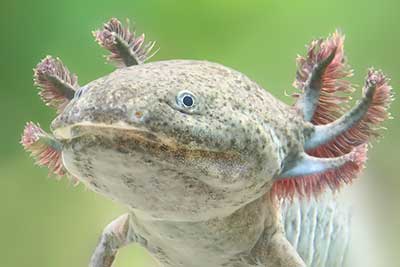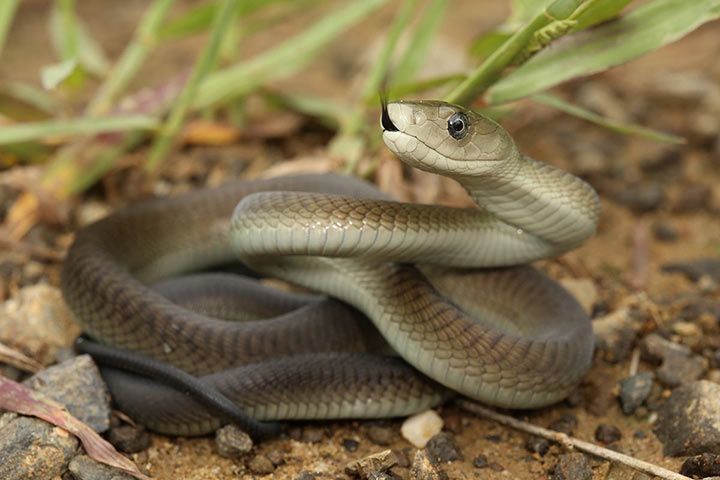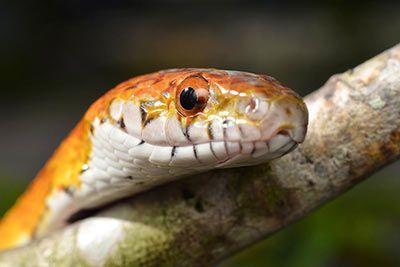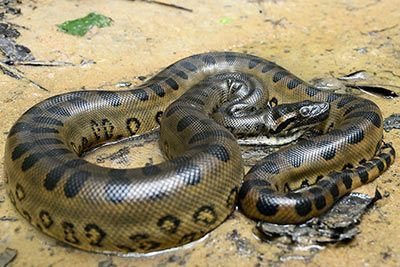Axolotl
Axolotl Facts
| Size | 9-11 in (23-28 cm) |
| Speed | Unknown |
| Weight | 2-7 oz (60-200 g) |
| Lifespan | 10-20 years |
| Food | Worms, crabs, fish |
| Predators | Birds, fishes |
| Habitat | Mexico |
| Class | Amphibians |
| Order | Salamanders |
| Family | Mole salamanders |
| Scientific name | Ambystoma mexicanum |
| Characteristics | Feather-like gill rakers |
Main Characteristics
Looking at an Axolotl, you do not know exactly what to say. “Oh, isn't it sweet!” or “Ugh, creepy!”? The axolotl resembles a monstrously over-sized tadpole, but it actually is a nocturnal salamander. Salamanders, like frogs and gymnophiona, are amphibians. We generally know the white to pink colored axolotl with pink gill rakers, which actually is the albino variant (albinos lack color pigments). Its natural color is more of a dark gray or brown.
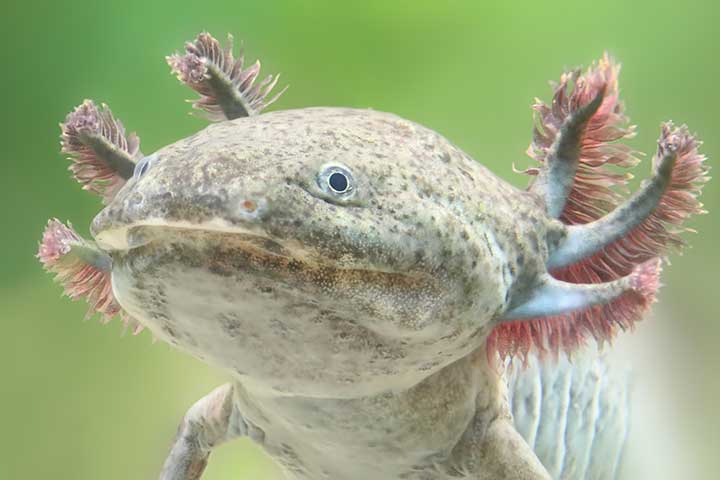
Origin
Where Does the Name Come From?
Axolotl is an Aztec word. "Atl" means "water" and "xolotl" is the name of an Aztec god and can also mean "monster". So you could translate its name as “water monster”. Some people pronounce it like “aksolotol”, while others say “asholotol”.
Where Does the Animal Come From?
Axolotls can only be found in the Xochimilco lake, the Chalco lake, and in some waters around Mexico City – apart from home aquariums all over the world. They love cool, oxygen-rich water.
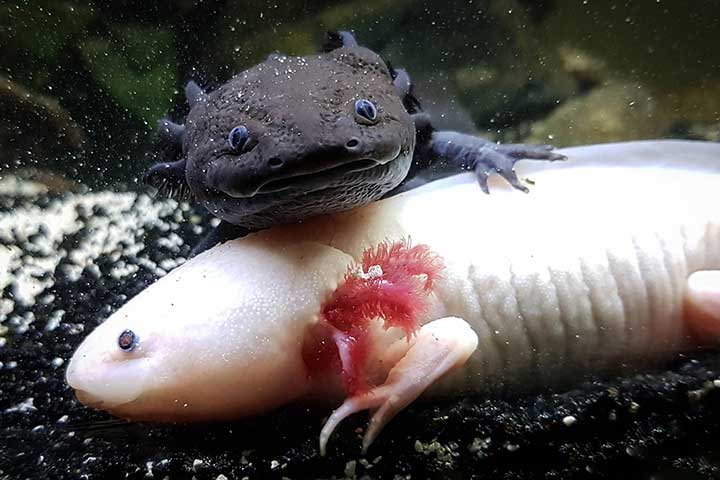
Life Style
The Axolotl Remains a Larva Throughout Its Life
Even though the axolotl is growing during its entire life, it always remains a larva due to its thyroid gland. This organ normally produces hormones (neurotransmitters), but it doesn’t work properly. It particularly lacks the hormone that would help the animal to develop into an adult salamander. If an axolotl gets artificially supplied with the hormone, it will actually transform. But it will often only live for four to five years. As a larva, it can live to be up to 20 years old.
Senses and Abilities
They Can Grow Back Limbs and Organs
We know that crabs can regrow body parts. But the axolotl can regrow more than just limbs. It can completely regrow whole and functional organs and even parts of its brain. How does it do this? Scientists would love to know, and are busy trying to find out.
Reproduction
In their natural habitat, axolotls reproduce in the spring. The female lays between 80 and 800 eggs on the leaves of underwater plants. They hatch after 15-20 days.
Axolotls as Pets
Is that possible? Yes! Our pet section provides a detailed pet profile for the Axolotl!
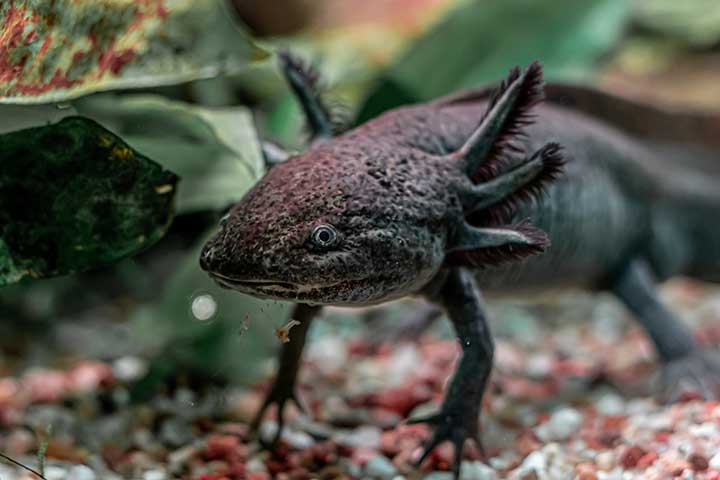
- Find Out More:
- Alpine Newt Facts
- Fire Salamander Facts
- Watch Now on animalfunfacts.net:
 All About Amphibians
All About Amphibians







